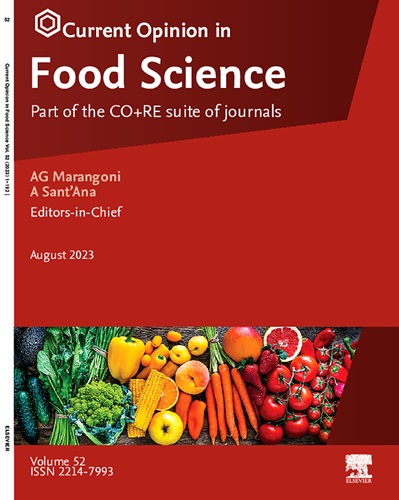An innovative approach for probiotics and postbiotics-based antimicrobial packaging systems: design, characterization, and benefit for food application
IF 8.9
1区 农林科学
Q1 FOOD SCIENCE & TECHNOLOGY
引用次数: 0
Abstract
The drive for healthier eating and beneficial dietary practices has led to the creation of innovative probiotic and postbiotic foods with antibacterial properties. Researchers have recently focused on probiotic and postbiotic packaging systems exploiting the antimicrobial properties of selected strains against harmful microorganisms and spoilage agents. The effectiveness of these packaging systems depends on various factors, including their composition, the type of probiotics and postbiotics used, and how they are incorporated into the packaging material. This paper provides a brief overview of current state-of-the-art practices regarding incorporating probiotics and postbiotics into packaging systems to develop antibacterial active packaging. It also focuses on the stability of the system during storage and the expected future prospects. These active packaging systems offer benefits such as improved food safety, longer shelf life, and disease prevention. However, challenges remain, including maintaining probiotic stability on the packaging material and expanding their applications. Overall, this paper discusses the newest perspective on the incorporation of probiotics and postbiotics in the development of food antimicrobial packaging systems, opening new avenues both for the selection criteria of microorganisms and for the selection of packaging solutions.
一种基于益生菌和后益生菌的抗菌包装系统的创新方法:食品应用的设计、表征和效益
对健康饮食和有益饮食习惯的推动导致了具有抗菌特性的创新益生菌和后生物食品的创造。研究人员最近将重点放在益生菌和后生物包装系统上,利用选定菌株对有害微生物和腐败剂的抗菌特性。这些包装系统的有效性取决于各种因素,包括它们的组成,所使用的益生菌和后益生菌的类型,以及它们如何被纳入包装材料。本文简要概述了目前有关将益生菌和后益生菌纳入包装系统以开发抗菌活性包装的最新实践。并重点讨论了系统在存储过程中的稳定性和对未来前景的预期。这些活性包装系统提供了诸如提高食品安全性,延长保质期和预防疾病等好处。然而,挑战仍然存在,包括保持益生菌在包装材料上的稳定性和扩大其应用范围。总的来说,本文讨论了益生菌和后益生菌在食品抗菌包装系统发展中的最新观点,为微生物的选择标准和包装解决方案的选择开辟了新的途径。
本文章由计算机程序翻译,如有差异,请以英文原文为准。
求助全文
约1分钟内获得全文
求助全文
来源期刊

Current Opinion in Food Science
Agricultural and Biological Sciences-Food Science
CiteScore
18.40
自引率
4.00%
发文量
157
审稿时长
92 days
期刊介绍:
Current Opinion in Food Science specifically provides expert views on current advances in food science in a clear and readable format. It also evaluates the most noteworthy papers from original publications, annotated by experts.
Key Features:
Expert Views on Current Advances: Clear and readable insights from experts in the field regarding current advances in food science.
Evaluation of Noteworthy Papers: Annotated evaluations of the most interesting papers from the extensive array of original publications.
Themed Sections: The subject of food science is divided into themed sections, each reviewed once a year.
 求助内容:
求助内容: 应助结果提醒方式:
应助结果提醒方式:


